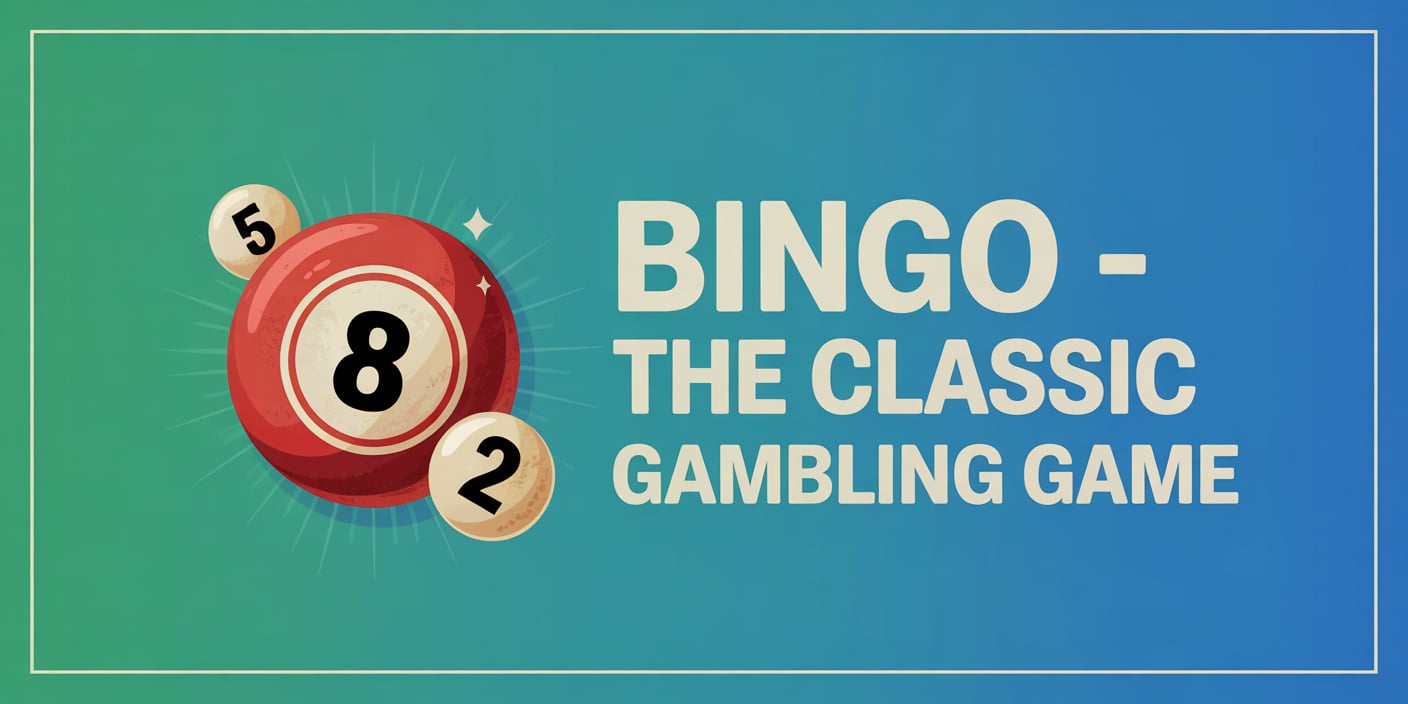Bingo – The Classic Gambling Game: Rules, History, and Variants

There are countless gambling games, but among them, there are classics. They are the most widely known entertainments, for even those who do not enjoy gambling know about them. One of them is bingo, a term that has become a universal and completely legitimate synonym for happiness, success, and triumph. Also, players have the opportunity to win bingo cash prizes, making it an even more exciting game to play.
What is Bingo?
Bingo is a gambling game which forms the basis of many lotteries. In post-Soviet countries, there was a more popular version of this game known as loto.
In contrast to most gambling games, bingo is not only a game of gambling. Individuals generally play it for fun with friends and relatives but not for money. Bingo has the ability to unite generations because children and grown-ups alike enjoy playing it.
The objective in bingo is to cross off all the numbers on the card. They are randomly picked by the host. The person who manages to do it first wins. To become a winner, they must scream "Bingo!"
Rules of Gambling Bingo
Bingo is typically played in bingo halls and casinos, where dozens of players can play simultaneously. Players buy cards with numbers before the game begins. The player may have several cards, and they stand a better chance of winning.
To play bingo, besides players and cards, a host and a machine holding balls to select are needed, though any other method of selecting numbers can be used. In playing, the host selects a ball at a time and announces the number it has to players. They look for the number on their cards and mark it off if they have it.
The game continues until a player completes the job—either crosses all the figures on his card or forms a specific figure or pattern with the crossed figures. The winning player must yell "Bingo!"—the game is over only then.
The card is always checked to determine whether the player has cheated or not. If everything is okay, the participant receives his prize.
Types of the Game
The different versions of bingo differ in the number of balls with numbers and the number of fields in the game cards. These factors determine the length of the game and the variety of possible combinations. In addition, different types of bingo can decide winners in different ways.
75-Ball Bingo or American Bingo is the standard version of the game. The name itself signifies that this version uses 75 numbered balls. In this bingo, each card has 25 spaces arranged in a 5 x 5 pattern with one of them blank. There are only 24 numbers printed on the card, and it is presumed to have a center space filled.
In American bingo, the players typically must form a pattern from the marked squares in order to win. It can be a line, a shape, or any other shape specified in the rules.
90-Ball Bingo (British Bingo) is played most often in Europe. The cards used in this version include 27 squares in a 3 x 9 arrangement, but only 15 are numbered.
British bingo usually has three stages, rewarding interim winners. The first to achieve is the player who gets one line of numbers. The second to achieve gets two lines, and the top winner is the player who achieves the whole card. The win is divided: 55% for the player with three lines, 30% for the player with two lines, and 15% for the player with one line.
30-Ball Bingo is also a game that is believed to be played quickly. The game itself is typically short, and the players are dealt cards with 3 x 3 squares. The first person to cross out all the numbers wins.
Of course, these are not all the ways to play bingo. This popular game has many variations and even allows players to come up with their own rules and conditions.
History of Bingo
It is thought that the ancestor of contemporary bingo was played as far back as the 16th century. The earliest reference to the Italian game Lo Giuoco del Lotto D'Italia was in the 16th century too. In those times, numbered balls were drawn to choose members of the Great Council of Genoa.
After the game became popular in Italy, variations of it reached other European countries. Le Lotto was a pastime for the wealthy in France, and in Germany, it was used to educate children.
Modern bingo originated in America. American businessman Edwin Lowe suffered a business loss during the Great Depression. He was in the toy business, but his business collapsed. He found the solution to this ill luck accidentally while visiting a fair.
He was watching a people group happily engaging in a game he never seen before. People had cards that contained figures, and in marking corresponding figures, players place beans on fields. When the winners were called out, players would shout "Bean go!" which is translated "The bean goes!".
Edwin Lowe liked this idea. He modified the rules of the game and called it "Bingo" – either just because he had heard what the players had screamed out at the fairground, or so that his version of the game would stand apart from theirs.

